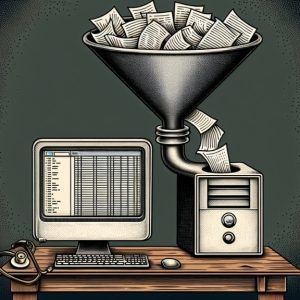
Last month the Health Secretary, Jeremy Hunt, admitted that between 2011 and 2016 the NHS had somehow managed to lose 708,000 pieces of confidential medical correspondence, including test results and treatment plans.
One of the biggest losses of clinical data to date and the worst in the Health Service’s 69-year history, Jeremy Hunt was forced to claim that the losses would in no way compromise patient health.
However, it also emerged in the last few weeks that one of his flagship projects, the push right from the Department of Health for the Service to become fully paperless by 2018, was slipping further and further from view.
Hunt told the cross-party NHS Sustainability committee of MPshe was “quite relieved most people seem to have forgotten” the plan.
The problem for health Trust CIOs is that the majority of them took hunt’s ideas very seriously.
After all a paper-free NHS was a route of travel that at one time featured its own section on the DoH website, as was frequently debated by Hunt and senior stakeholders in NHS England – and obliging Trust IT managers to find ways to deliver against it. And far from being just a talking shop, this was a funded project. Only last year, Hunt announced that he had received an extra £4bn from the Treasury to help the NHS in this regard.
The fact that all this is happening in the context of losses of masses of paper records strikes many of us as highly ironic. And a paperless NHS will of course not only be an NHS that does not have documents going astray and languishing in warehouses, but it will also be able to realise all sorts of benefits.
These will be the power to route information without any need for re-keying or asking the patient the same questions, allow collation of data for better analysis of the bigger trend, programmatic search and so on – all of which could help constrained budgets stretch that bit further.
Changes along the way – but the journey is still a valid one
And of course, the paperless NHS target has been subject to change since its birth in 2013. Somewhere along the line it has changed to paperless by 2020 and following the Wachter Review last September’s warning that the 2020 target was also likely to fail, it is now thought that 2023 is the more realistic ambition.
However for all Hunt’s off-handedness to the target, the correct way to read the situation is exactly that: the need for paperless hasn’t been forgotten, just pushed out further, as the sector tries to implement things like NHS England’s Digital Exemplar scheme and other ideas that emerged from the Wachter Review.
And to be just to Hunt, he confirmed as much in his Committee appearance. After all, there’s lots of great progress being made when it comes to digital in the NHS.
So the best response to the Health Secretary poorly expressed views about this core target is to look at the great progress to paperless made despite the regrettable paper records loss.
As a result, 2018 might well remain a realistic target for some ambitious Trusts. Certainly it is one they will reach in the 2020s.
Practical techniques like the integrated digital care record (IDCR), for instance, is emerging as a great way to deliver against the Paperless NHS objectives. NHS England has a great example on its website from Bradford and Airedale.
Targets none of us want to forget
But the reality is that the IDCR approach may need a bit of a push to get it going. The UK needs a lot more Bradford and Airedales. The good news is there are technologies available that can help with IDCR projects, and more are coming.
Unfortunately, what a lot of these solutions suffer from is a lack of openness – they are closed and rigid. The spirit of Paperless and the Wachter guidance is interoperability. It’s hard to see how going back to silos can push around the wealth of data and data types needed for a good IDCR, like path test results, DICOM format scans, referral notes, social care records, and so on.
The verdict has to be that an open, standards based, partnership-driven approach, backed by some of the best clinical content management technology on the market, can help make a truly digital and integrated Paperless NHS a realistic goal to shoot for.
We can’t afford more serious data loss – and we can’t afford to keep supporting paper-based archaic processes either.
And those are targets no one wants to forget, Secretary.






